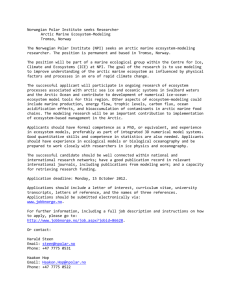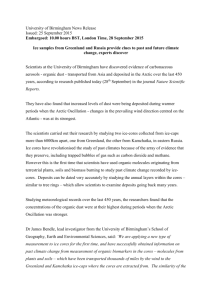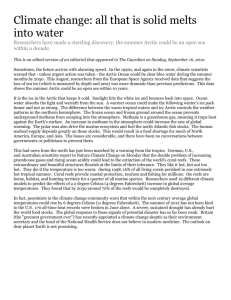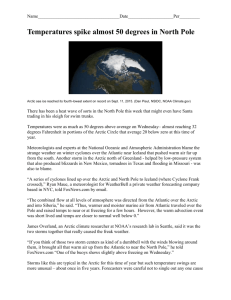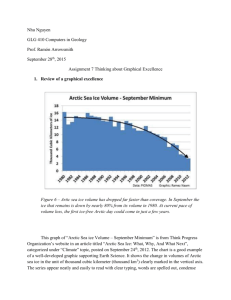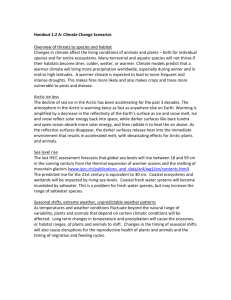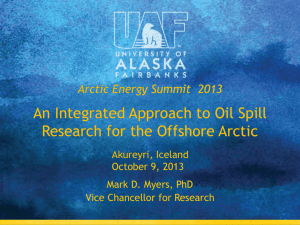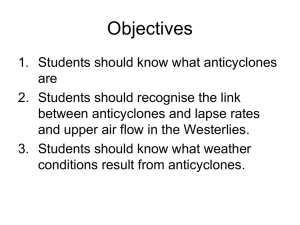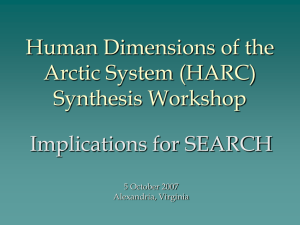Arctic summertime sea ice melting: the role of midlatitude cyclones
advertisement
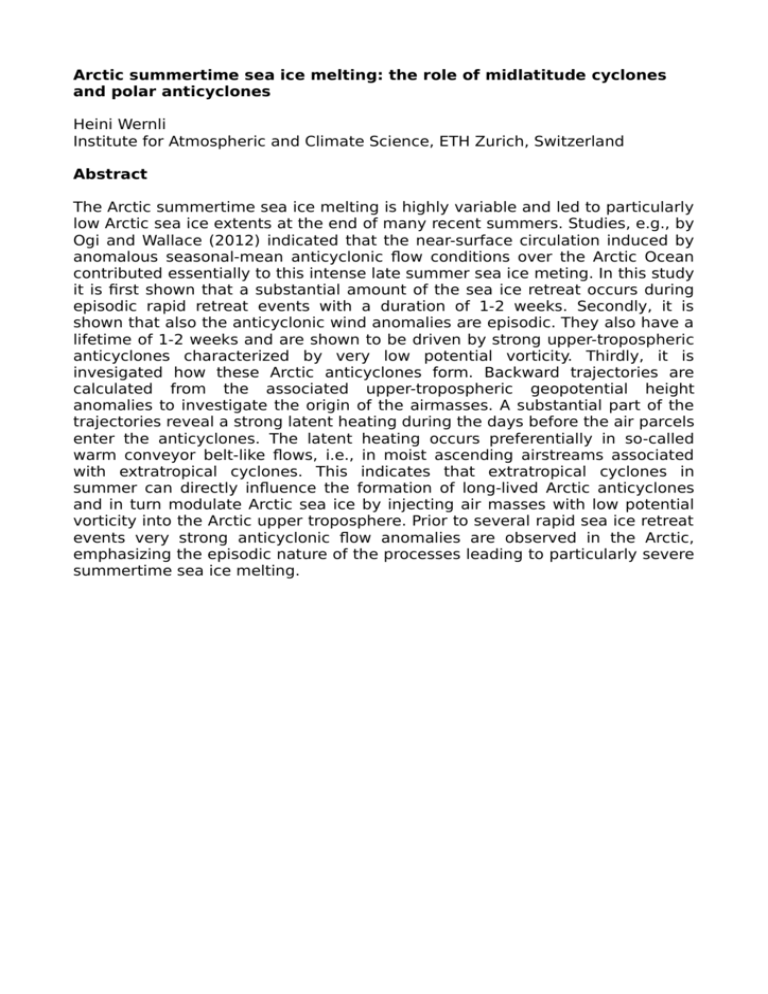
Arctic summertime sea ice melting: the role of midlatitude cyclones and polar anticyclones Heini Wernli Institute for Atmospheric and Climate Science, ETH Zurich, Switzerland Abstract The Arctic summertime sea ice melting is highly variable and led to particularly low Arctic sea ice extents at the end of many recent summers. Studies, e.g., by Ogi and Wallace (2012) indicated that the near-surface circulation induced by anomalous seasonal-mean anticyclonic flow conditions over the Arctic Ocean contributed essentially to this intense late summer sea ice meting. In this study it is first shown that a substantial amount of the sea ice retreat occurs during episodic rapid retreat events with a duration of 1-2 weeks. Secondly, it is shown that also the anticyclonic wind anomalies are episodic. They also have a lifetime of 1-2 weeks and are shown to be driven by strong upper-tropospheric anticyclones characterized by very low potential vorticity. Thirdly, it is invesigated how these Arctic anticyclones form. Backward trajectories are calculated from the associated upper-tropospheric geopotential height anomalies to investigate the origin of the airmasses. A substantial part of the trajectories reveal a strong latent heating during the days before the air parcels enter the anticyclones. The latent heating occurs preferentially in so-called warm conveyor belt-like flows, i.e., in moist ascending airstreams associated with extratropical cyclones. This indicates that extratropical cyclones in summer can directly influence the formation of long-lived Arctic anticyclones and in turn modulate Arctic sea ice by injecting air masses with low potential vorticity into the Arctic upper troposphere. Prior to several rapid sea ice retreat events very strong anticyclonic flow anomalies are observed in the Arctic, emphasizing the episodic nature of the processes leading to particularly severe summertime sea ice melting.


